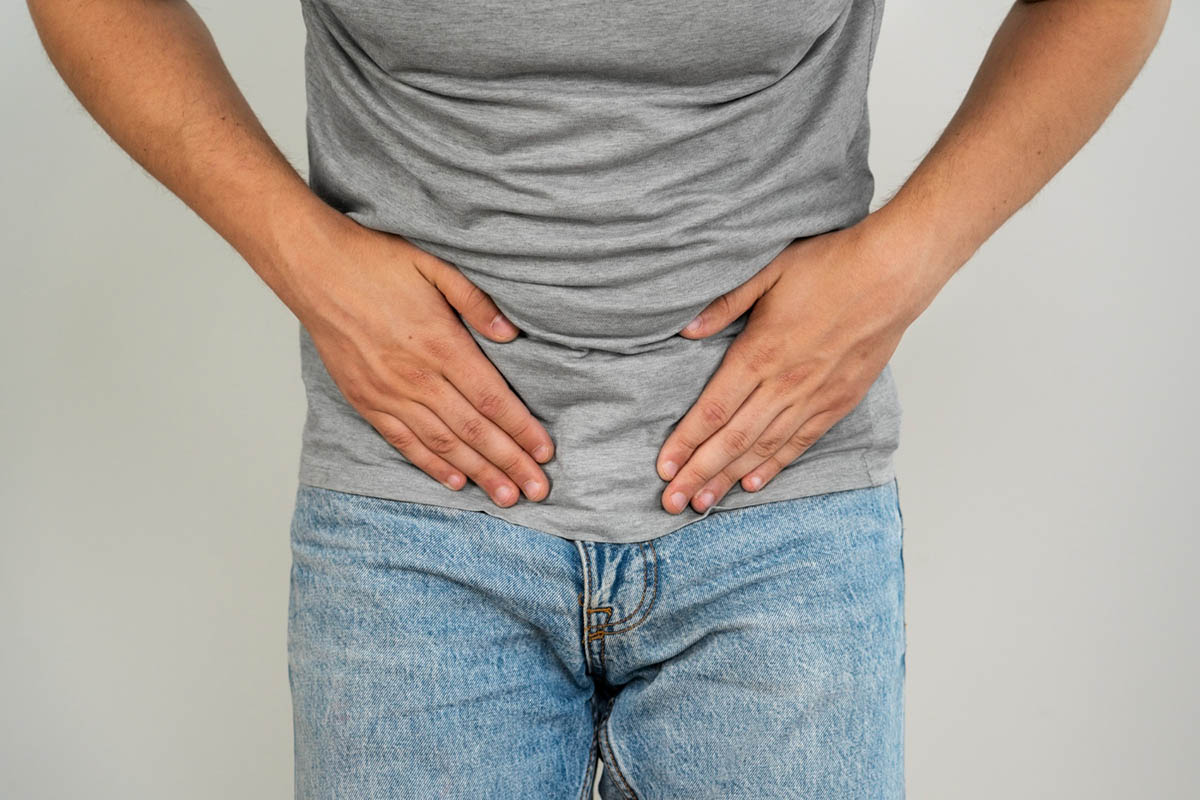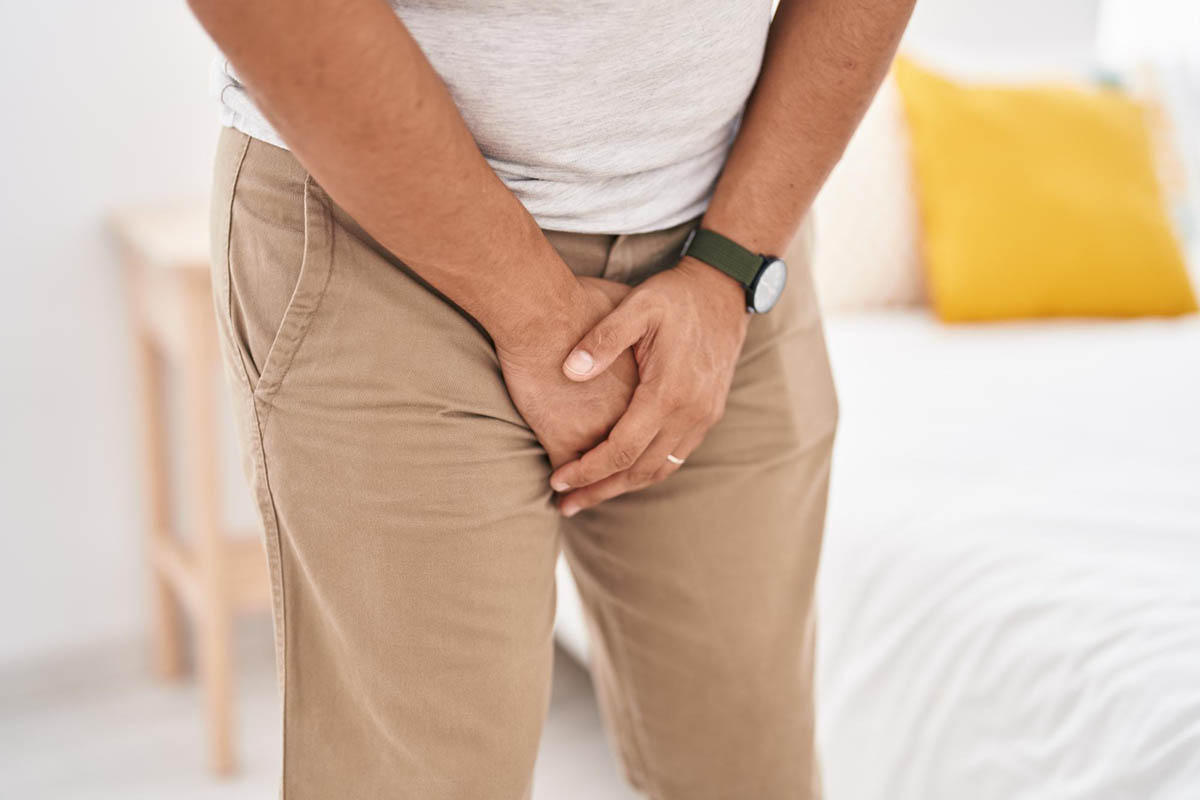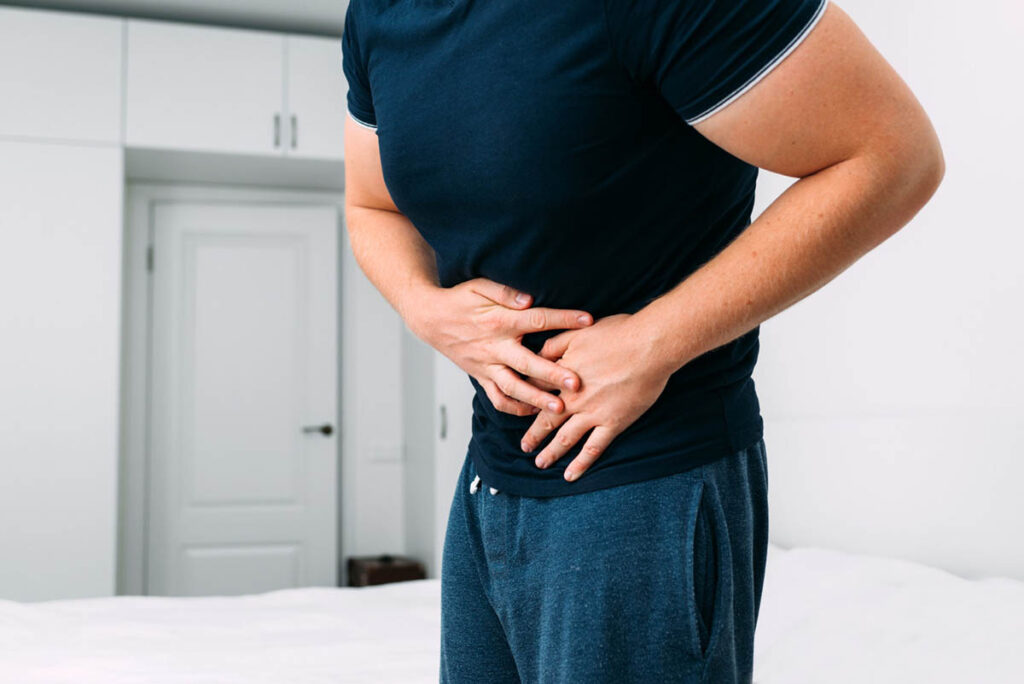Groin pain in men is a prevalent issue that can significantly affect daily activities and overall quality of life, often requiring medical care. It refers to discomfort or pain in the area where the abdomen ends and the legs begin. Addressing groin pain is crucial as it can stem from various causes, some of which may require immediate medical attention, to maintain Men Pelvic Health, particularly given the involvement of abdominal muscles.
Studies indicate that up to 20% of athletes experience groin pain men at some point in their careers, underscoring its common occurrence among active individuals, particularly in sports like hockey, soccer, and football. Athletes are especially prone to groin pain, with muscle, tendon, or ligament strains being the leading cause, often termed a sports hernia. Statistics reveal that approximately 25% of athletes experience a groin strain during their careers. This highlights the importance of understanding the causes and appropriate management strategies for this widespread condition.
Additionally, kidney stones pose a significant health concern for men. Statistics indicate that nearly 11% will experience a kidney stone in their lifetime, compared to 6% of females, underscoring the importance of kidney disease awareness. The presence of kidney stones can contribute to lower abdominal pain in men, necessitating awareness and proactive measures for prevention and treatment.
This article aims to provide a comprehensive overview of groin pain in men, including its symptoms, causes, and treatment options, to assist individuals and their healthcare providers. By understanding these factors, individuals can effectively manage and alleviate this condition, which commonly affects the lower abdominal region, inner thighs, and the pelvic floor. With the proper knowledge and approach, including consulting with a physical therapist, individuals can find relief and improve their overall pelvic health.
Groin Pain Symptoms
Groin pain manifests differently for each individual but commonly includes several common symptoms:
- Sharp or dull pain: Pain may range from mild discomfort to severe throbbing sensations.
- Swelling or bruising: Visible signs of inflammation or discoloration in the groin area, sometimes caused by environmental factors.
- Stiffness and reduced mobility: Difficulty in moving the hip or leg freely, which can affect the range of motion.
- Burning sensation: Uncomfortable tingling or burning pain in the groin area male.
- Pain during physical activities or movements: Exacerbated pain during exercise, walking, or sudden movements, impacting daily life.
These symptoms can vary based on the underlying cause of the groin pain, which may include several factors.
Causes of Groin Pain

Groin pain can stem from various conditions, including muscle, tendon, or ligament strains, hernias, kidney stones, infections, nerve entrapment, and even referred pain from the lower back or hip. Sports-related activities, such as sudden movements or overexertion, can result in muscle strains, while hernias can occur when organs push through weakened areas of the abdominal wall. Kidney stones can cause severe abdominal or groin pain when they pass through the urinary system, and infections can affect the prostate, testicles, or urinary tract, leading to discomfort in the groin area. It is essential to identify the specific cause of groin pain to determine the most appropriate treatment approach, including the possibility of a sports hernia.
Common Causes
Groin Strain: A groin strain occurs when the muscles in the male pelvis area are overstretched or torn, often due to sudden movements or physical activities, such as those involving the adductor muscles.
- Weak muscles or muscle spasms: Groin strain can occur when the muscles in the male pelvis area are weak or experience spasms, such as those affecting the thigh muscles. This can happen due to muscle imbalances, lack of strength, or inadequate warm-up before physical activities.
- Bruises: Bruises in the groin can result from direct impact or trauma to the muscles or blood vessels. This can cause pain, tenderness, and discoloration in the affected area.
- Swelling: Swelling in the groin area can occur as a response to injury or inflammation, requiring the potential use of an ice pack. It may be accompanied by pain and limited mobility in the hip or leg.
- Trouble moving your hip or leg: Groin strain can lead to stiffness and difficulty in moving the hip joint or leg freely, often due to issues with the adductor muscles. This can make performing activities such as walking, bending, or lifting challenging.
Inguinal Hernia
This occurs when abdominal contents protrude through a weak spot in the abdominal wall, often causing a visible bulge and discomfort in the groin area, known as an inguinal hernia.
Prostatitis
Inflammation of the prostate gland can cause pain in the groin, pelvis, or lower back, accompanied by urinary symptoms.
Epididymitis
Inflammation of the epididymis (tube at the back of the testicle that stores and carries sperm) causes pain and swelling in the testicular area.
Orchitis
Inflammation of the testicles, often due to viral or bacterial infections, leads to pain and swelling in the testicular region.
Testicular Torsion
A medical emergency where the spermatic cord twists, cutting off blood flow to the testicle, causing sudden and severe pain in the groin.
Testicular Cancer
While rare, testicular cancer can present as painless or painful lumps or swelling in the testicular area, accompanied by groin discomfort.
Hip Problems
Conditions such as osteoarthritis or labral tears in the hip joint can radiate pain to the groin area, impacting the upper thigh.
Kidney Stones
Hard deposits of minerals and salts that form inside the kidneys can cause severe pain as they pass through the urinary tract, often radiating to the groin and lower abdominal pain in men, highlighting the importance of maintaining adequate blood supply.
Kidney Infection:
Infections of the kidneys (pyelonephritis) can cause flank pain that may radiate to the groin area.
When to Seek Medical Help
If you experience persistent or severe groin pain, especially accompanied by fever, swelling, or difficulty urinating, seek medical attention promptly. Delayed treatment can exacerbate underlying conditions and lead to complications.
Groin Pain Diagnosis
When experiencing groin pain, seeking medical help for an accurate diagnosis and appropriate treatment is essential. Healthcare professionals typically begin by conducting initial medical assessments, patient histories, and physical examinations.
Initial Medical Assessments
During the patient history assessment, the doctor will ask about the nature of the pain, how long it has been present, any factors that trigger or worsen the pain, and if there are any accompanying symptoms. This information can provide valuable insights into the possible causes of the groin pain. Following the patient history assessment, a physical examination will be conducted. The doctor will visually inspect the affected area, looking for signs of swelling, redness, or visible abnormalities. They may gently palpate the groin region to check for tenderness or lumps.
Patient history and physical examination
Doctors may recommend additional diagnostic tests to further investigate the underlying causes of groin pain. These tests can include imaging scans, blood tests, and urine tests.
Diagnostic tests
- Imaging (X-ray, MRI, ultrasound): Imaging tests such as X-rays, MRIs, or ultrasounds can provide a detailed view of the structures within the groin area. X-rays help check the bones and other dense structures, while MRIs and ultrasounds can visualize soft tissues and organs. These imaging tests can help identify hernias, hip joint problems, or kidney stones.
- Blood tests: Blood tests can help identify signs of infection or inflammation. They may measure specific markers, such as white blood cell count, which can indicate an ongoing infection. Blood tests can also assess hormone levels or other factors relevant to certain conditions that can cause groin pain.
- Urine tests: Urine tests are commonly performed to check for possible urinary tract infections or kidney stones. These tests can detect the presence of bacteria, red or white blood cells, or minerals that may suggest an infection or the presence of kidney stones.
Treatment Options
Treatment for groin pain varies based on the cause and severity:
Non-surgical treatments may include:
- Rest and activity modification: Avoiding activities that exacerbate pain and allowing adequate rest for recovery.
- Ice and heat therapy: Alternating cold packs and warm compresses to reduce inflammation and alleviate discomfort.
- Medications: Pain relievers, anti-inflammatories, or antibiotics (if infection is present) as prescribed by a healthcare provider.
- Physical therapy: Specific exercises to strengthen muscles, improve flexibility, and aid in rehabilitation, including Pelvic floor Therapy techniques where applicable, as offered by Vitality Therapy & Performance.
Surgical treatments may be necessary for conditions such as:
- Hernia repair: Surgical correction to address inguinal hernias and prevent further complications.
- Surgery for hip issues or testicular conditions: Procedures to repair damaged tissues or address structural abnormalities.
- Recovery and post-surgical care: Surgical interventions require adherence to post-operative care instructions and rehabilitation protocols to optimize outcomes.
Tips to Prevent Groin Pain

To reduce the risk of groin pain:
- Warm-up and stretch: Before physical activity, exercise and stretches to prepare muscles and reduce strain.
- Maintain good posture: Proper posture during activities and daily tasks can prevent undue stress on the groin and hip joints.
- Stay hydrated: Adequate hydration can help prevent kidney stones, a potential source of groin pain.
- Use protective gear: Wear appropriate protective gear when participating in sports or high-risk activities to minimize the risk of injury.
Conclusion
Groin pain in men can stem from various causes, ranging from muscle strains to severe medical conditions. Early recognition of symptoms, prompt medical evaluation, and appropriate treatment are essential to alleviate pain, prevent complications, and facilitate recovery. By understanding the underlying causes and implementing preventive measures, individuals can actively manage groin health and maintain optimal physical well-being.
FAQs
When should I worry about groin pain?
Persistent or severe groin pain, especially accompanied by swelling, fever, or difficulty urinating, warrants immediate medical attention.
How to get rid of groin pain in males?
Treatment options vary based on the cause but may include rest, medication, physical therapy, or surgical intervention, as a healthcare provider recommends.
Is walking good for groin pain?
Moderate walking can be beneficial for gentle movement and promoting blood flow, but avoid activities that exacerbate pain until evaluated by a healthcare professional.

